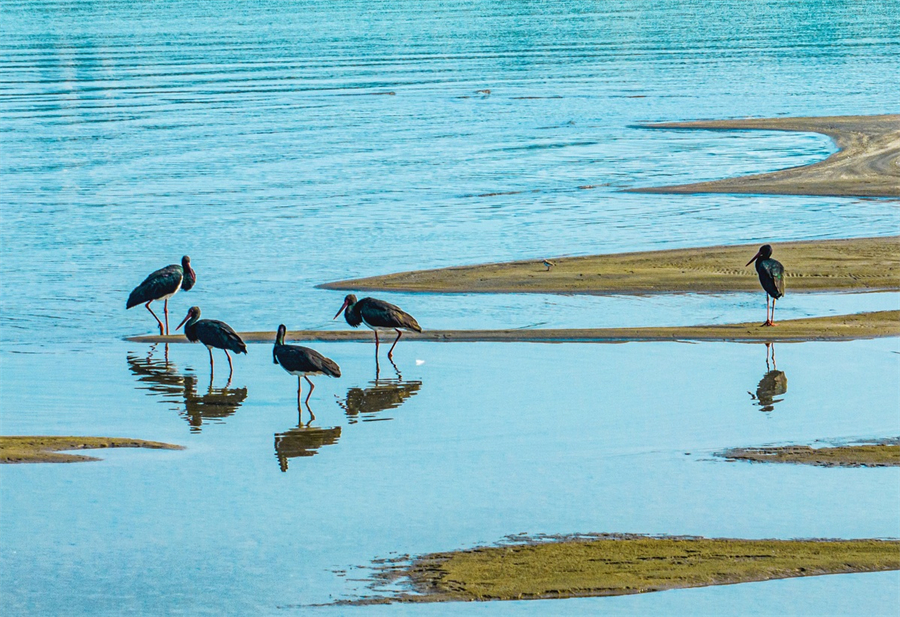On the move

A photo shows black storks foraging for food along the banks of the Yangtze River in Yidu, Hubei province. [Photo by Feng Jian/For chinadaily.com.cn]
Populations growing
Key nature reserve management bureaus in China have reported more birds wintering in the nation's wetlands, including some new rare species.
In February, the forestry bureau in Hunan province reported 72 species of waterbirds that were spending this past winter at Dongting Lake, which stretches across several counties and cities.
Mallards and Eurasian cranes are among the birds staying at the lake. Black-faced spoonbills, a rare and endangered species, were also spotted at Dongting after an absence of five years.
The number of the spoonbills has increased from 300 in the 1980s to more than 5,000 now, according to the National Forestry and Grassland Administration.
In December, staff members at the Shanghai Chongming Dongtan Bird National Nature Reserve recorded more than 2,900 tundra swans during a special monitoring session, up from some 1,000 seen during the winter in 2021.
Data from the Shanghai Forestry Bureau showed that in the 1980s, more than 3,000 of the swans wintered at the reserve. The number of the birds decreased for a time — eat one point, only dozens of them were seen — but thanks to restoration efforts, the migration population has rebounded.
The black stork, a national first-class protected bird, has wintered at the Qinglong River National Nature Reserve in Liaoning province for four years.
According to monitoring data at the reserve, as many as nine of the birds have been seen during that period. Last year, four of the birds were spotted.
























